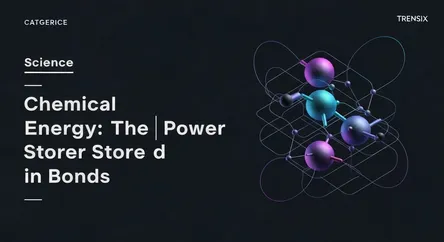Science
Chemical Energy: The Power Stored in Bonds

An introduction to chemical energy, the potential energy stored in molecular bonds that powers everything from our bodies to our cars and electronics.
What is it?
Chemical energy is a form of potential energy stored within the bonds of chemical compounds like atoms and molecules. This energy can be released when these substances undergo a chemical reaction, transforming into entirely new substances. Reactions that release energy are known as exothermic reactions, often producing heat as a byproduct. Common examples of materials containing stored chemical energy include food, wood, batteries, and fossil fuels such as coal and petroleum. This stored energy is essential for countless processes, waiting to be set in motion by a chemical change.
Why is it trending?
Chemical energy is a consistently relevant topic because it is central to global energy discussions and technological innovation. With the global shift towards sustainability, understanding how chemical energy is stored in biofuels and biomass is crucial. Advances in battery technology for smartphones, laptops, and electric vehicles are fundamentally about improving how we store and convert chemical energy into electrical power. Additionally, conversations surrounding the use of fossil fuels and their environmental impact keep the chemical energy contained within them at the forefront of climate, economic, and political discussions worldwide.
How does it affect people?
Chemical energy is integral to nearly every aspect of human life. The food we eat provides the chemical energy our bodies convert through metabolism to power our cells, maintain body heat, and enable movement. Transportation heavily relies on it, as the combustion of gasoline converts chemical energy into the mechanical energy that moves vehicles. Many people heat their homes by burning natural gas, releasing its stored chemical energy. Furthermore, the batteries in countless everyday devices, from remote controls to cars, function by converting chemical energy into electrical energy to power our modern lifestyles.